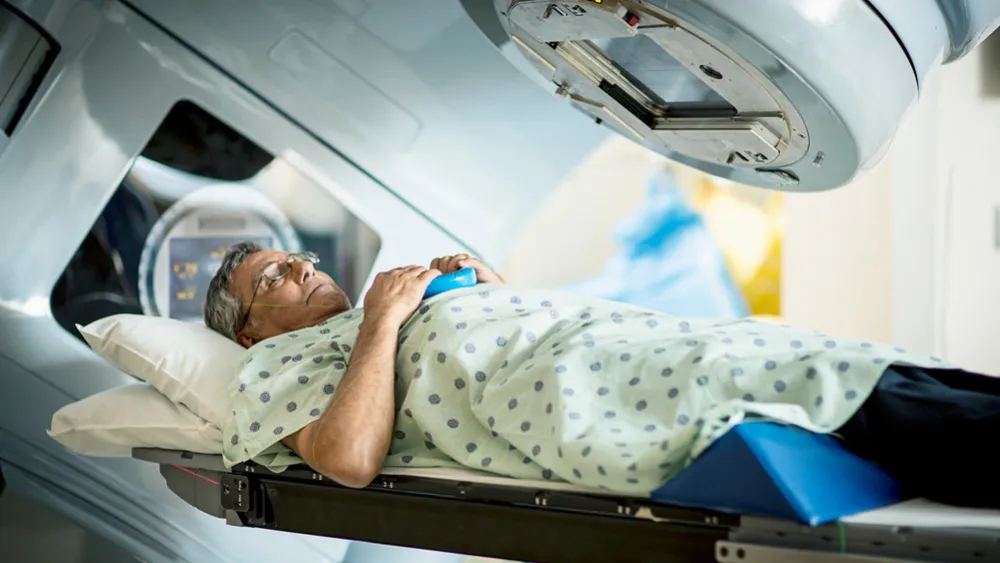




Cancer Care
Radiation Oncology: A Targeted Approach to Cancer Care
Published: Oct. 28, 2021

When it comes to cancer, it’s normal for everything to feel scary – especially treatment.
Many patients seem to be somewhat familiar with surgery and chemotherapy, but radiation therapy – or the use of radiation outside or inside the body to treat cancer and some benign conditions – seems to instill a different level of fear and anxiety in some patients.
If you’ve been given a treatment plan that includes radiation, know this: Despite what you may have heard from a friend or relative following their experience, every patient’s radiation journey is unique. And at Methodist, you’ve got an entire team ready to walk with you every step of the way.
Who It’s For
The treatment of most cancers involve a combination of surgery, chemotherapy, and/or radiation therapy. But some of the most common types of cancer that require a treatment plan with radiation include:
- Anal
- Breast
- Cervical
- Endometrial
- Head and neck
- Lung
- Pancreatic
- Prostate
The inclusion of radiation therapy will depend on many factors, including:
- The extent of disease involvement
- The status of cancerous margins after surgery
- The estimated risk of disease recurrence
Most Common Types
The most common types of radiation therapy are external beam radiation therapy and brachytherapy.
External beam radiation therapy involves the delivery of radiation from a source that is outside of the patient’s body and targeted at the patient’s tumor(s).
Brachytherapy involves delivering radiation from within the patient’s body by placing radiation sources as close to the tumor(s) as possible – and sometimes even directly into the tumor(s).
Side Effects
Most patients tolerate radiation well without severe side effects. When a patient does experience a reaction to radiation, it’s generally mild and dependent on the area of the body and size of the disease site being treated.
Common side effects may include:
- Mild to moderate fatigue
- Skin reactions that look and feel like sunburns (breast cancer)
- Discomfort or pain with swallowing (head and neck cancer)
- Nausea (abdominal cancer)
- Diarrhea (pelvic cancer)
State-of-the-Art Options
Methodist offers technologically advanced approaches for planning and delivering treatment, including:
- High Dose Rate (HDR) Brachytherapy: This procedure involves an applicator that temporarily places radioactive sources inside the body. These sources quickly deliver high doses of radiation to a targeted area while minimizing radiation exposure to surrounding organs.
- 3D Conformal External Beam Radiation Therapy: This technique shapes the radiation beam to match the shape of the tumor or target area in 3D, delivering radiation more precisely with less exposure to healthy surrounding tissues.
- Intensity Modulated Radiation Therapy (IMRT): This advanced form of 3D conformal external beam radiation therapy allows the radiation dose to conform even more precisely to the shape of a tumor or target area by modulating the intensity of the radiation beam into multiple smaller beamlets and changing the shape of the beam throughout the course of treatment. This type of therapy delivers high doses to the target area while minimizing the amount of radiation exposure to surrounding healthy tissues.
- Stereotactic Body Radiation Therapy (SBRT): This advanced type of external beam radiation therapy uses many extremely precise radiation beams to deliver intense doses of radiation to cancer cells while minimizing exposure to healthy tissues. A course of SBRT treatment typically takes place over five or fewer treatments.
- Linear Accelerator-Based Stereotactic Radiosurgery (SRS): This advanced method of delivering radiation to brain tumors in a highly targeted and intense manner can be used in place of surgery for patients who aren’t surgical candidates or refuse surgical intervention. It’s essentially the same technique as SBRT but used specifically for brain tumors. It’s typically completed in a single treatment.
Methodist is home to the Varian TrueBeam® radiotherapy system and Varian Edge radiosurgery system for external beam radiation therapy and stereotactic radiosurgery. We also offer the Elekta microSelectron® Digital Pulsed Dose Rate platform for high dose rate (HDR) brachytherapy. Thanks to these state-of-the-art devices, patients can expect more precise treatment that’s safe and convenient.
Your Team
Patients should leave their initial radiation oncology consultation with a full understanding of what’s to come. If your radiation oncologist doesn’t offer you the following, it’s completely acceptable to ask for:
- Pictures and videos to help you visualize what your treatment will consist of
- An explanation of possible side effects and an educated opinion on how likely you are to experience them
- Peace of mind – especially when it comes to any fears or concerns you may have about the treatment process
- Timely access to your radiation oncologist should any questions arise before, during or after your treatment
I often find that patients’ anxieties and fears are relieved on their own after getting through a few treatments and becoming familiar with the routine.
Your radiation oncology team – which consists of physicians, nurses, therapists, physicists and dosimetrists (those who determine and create dose distributions) – will become like family and provide you comfort in familiarity as they continue playing a vital role in your care and treatment. At Methodist, your care will also be guided by a multidisciplinary team of experts who work closely together throughout your cancer journey – from diagnosis to recovery.
Why the all-hands-on-deck approach? Because we know that collaboration is key to success. And when it comes to treating cancer, it truly takes a village. When you choose Methodist for your cancer care and beyond, you become part of our family – and part of our team.
More Resources
- Learn more about radiation oncology at Methodist.
- Find a radiation oncologist.
- Learn more about cancer care at Methodist.
- Learn more about our oncologic clinical research program.
- Read more articles centered on cancer care.


